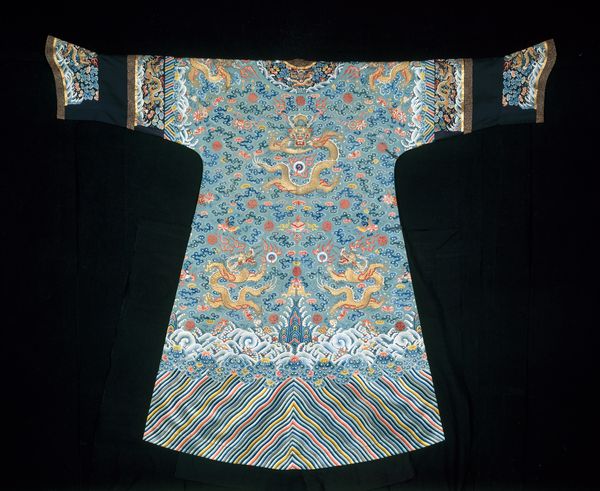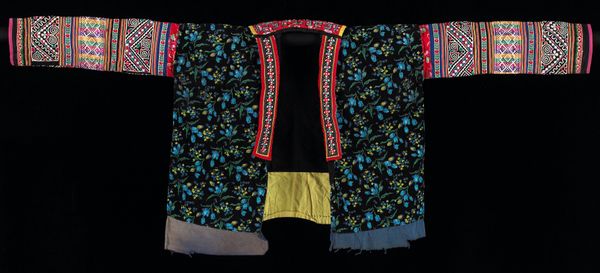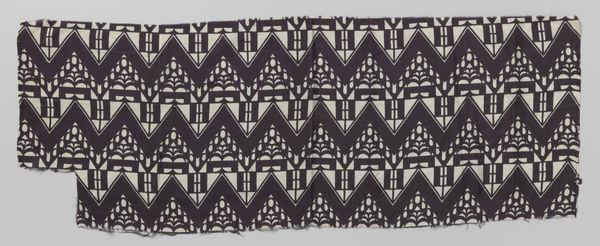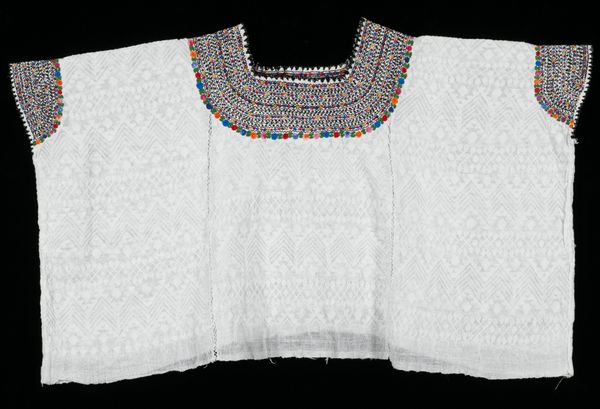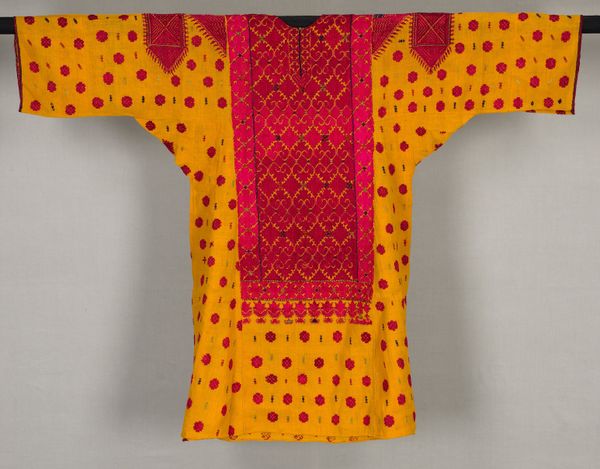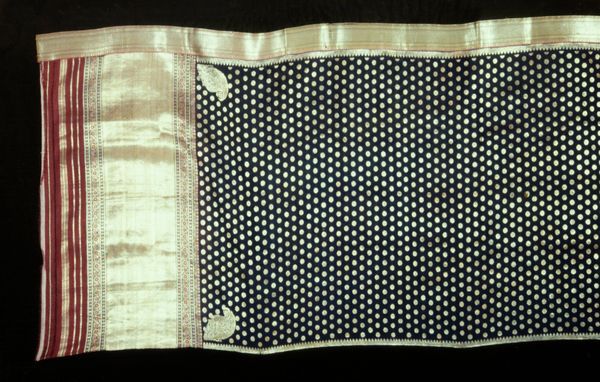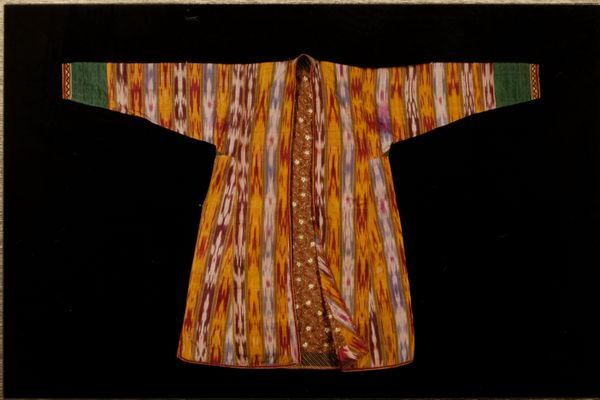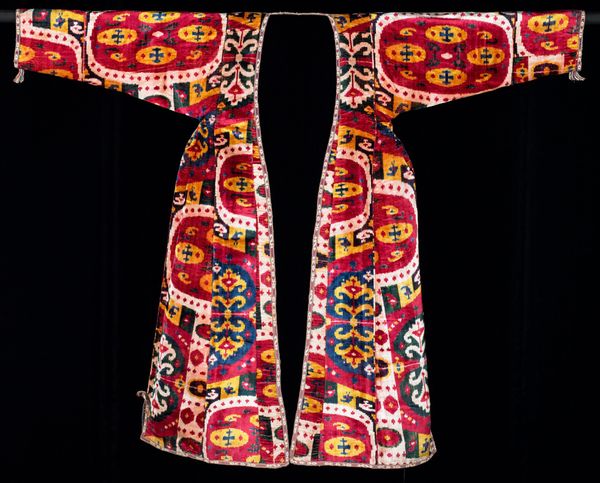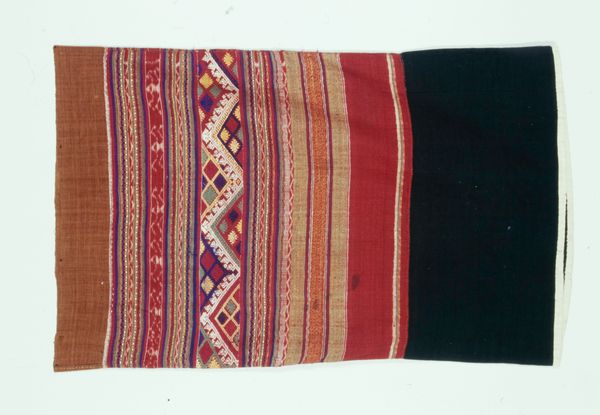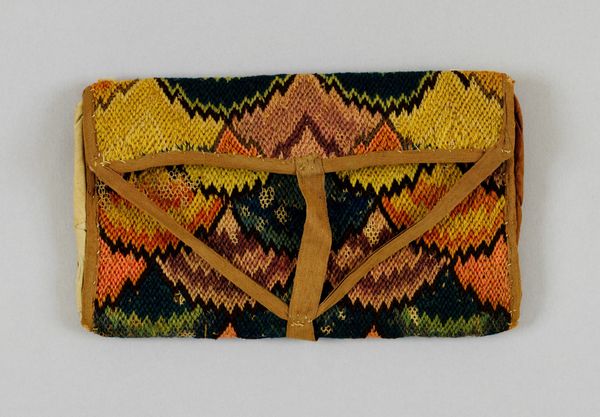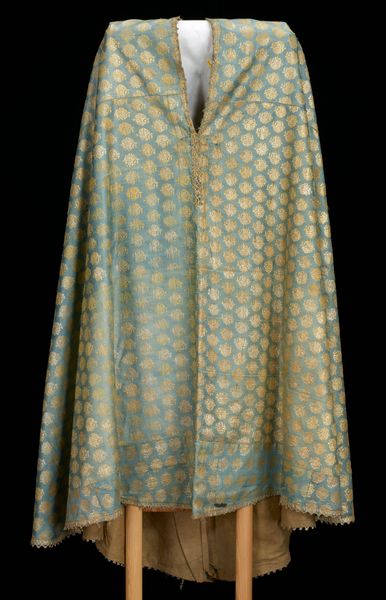
weaving, textile
#
fashion mockup
#
asian-art
#
weaving
#
textile
#
clothing promotion photography
#
collage layering style
#
fashion and textile design
#
hand-embroidered
#
fabric design
#
abstraction
#
pattern repetition
#
textile design
#
decorative-art
#
imprinted textile
#
layered pattern
Copyright: Public Domain
Curator: Let's examine this "Woman's Coat" from the late 19th century, currently residing here at the Minneapolis Institute of Art. Editor: It’s immediately striking, isn't it? The bright gold chevron pattern disrupted by these dark indigo, almost paisley-like figures. Visually, it has a very dynamic, almost dizzying energy. Curator: Indeed. The repetition you mention points to deep traditions, I think. These ikat patterns, these 'abr' designs as they’re often called, carried tremendous status in Central Asia. Garments like these signified not just wealth, but community membership, skill, even power. It is an example of a very culturally significant form of expression. Editor: I agree; there is something mesmerizing about the way these undulating forms disrupt the neat linearity of the chevrons, an imprinted textile achieved through a painstaking method. It is a rather interesting composition; each motif is slightly different. It almost defeats perfect order even in its production. Curator: Yes, you pinpoint a very central concept of cultural aesthetics: an appreciation of "perfect imperfection." These pieces were deeply encoded objects. If you imagine it, it tells a kind of story of continuity, yet slight personal difference and agency. Editor: Absolutely, I find myself drawn to the imperfect repetition. The maker’s hand is evident, asserting individuality within a pre-established visual syntax. Curator: To imagine the woman who wore it, adorned in meaning and beauty, is quite poignant. It's more than just an object. It's an encapsulation of life, its rhythms and variations. Editor: Looking closely, it almost transcends mere fashion. The piece vibrates with visual and symbolic weight, offering insight into societal aesthetics and spiritual symbolism, not unlike, say, Byzantine mosaics. Curator: Exactly! It connects the individual to a larger tapestry of tradition and, dare I say, visual memory. A testament to identity carefully woven and consciously worn. Editor: Thank you for those invaluable layers of interpretation. My analysis reveals merely what catches the eye. It is truly striking how art can represent abstract systems of cultural belief and aesthetics, or challenge our assumptions about regularity and standardization, even at this distance.
Comments
minneapolisinstituteofart almost 2 years ago
⋮
International demand for Uzbek ikats grew throughout the late 1800s and early 1900s, in keeping with a sweeping European fascination in what was then called “the Orient.” This coat was tailored to suit Western tastes and was donated to the museum by Lily Place, a Minneapolis native who lived in Paris, London, and Cairo.
Join the conversation
Join millions of artists and users on Artera today and experience the ultimate creative platform.

